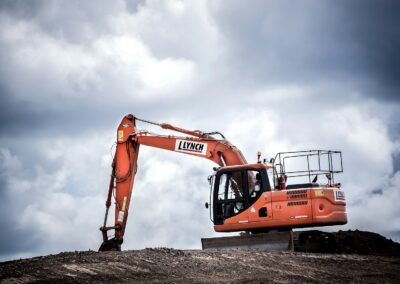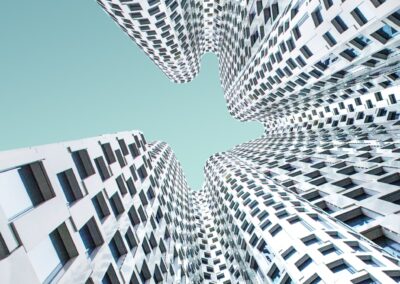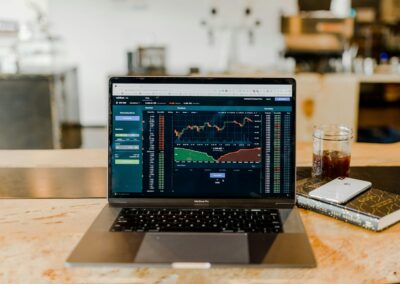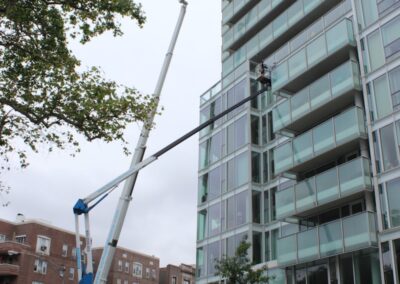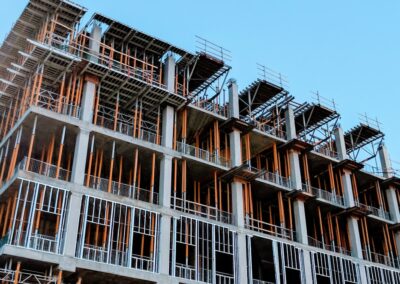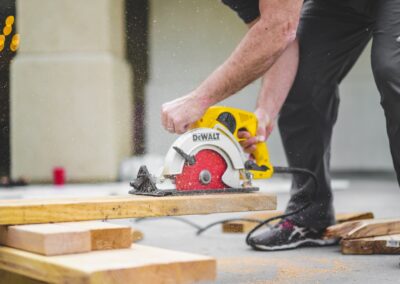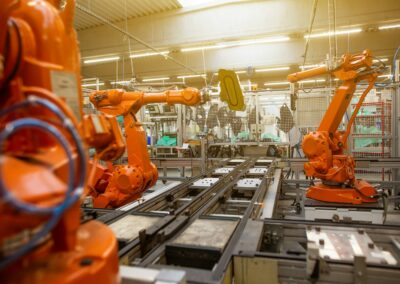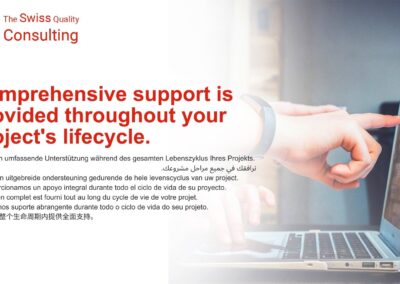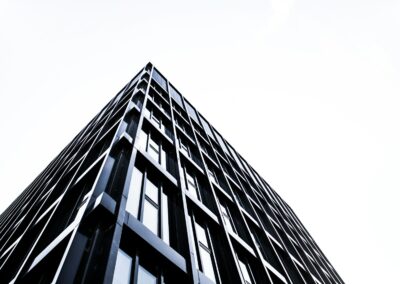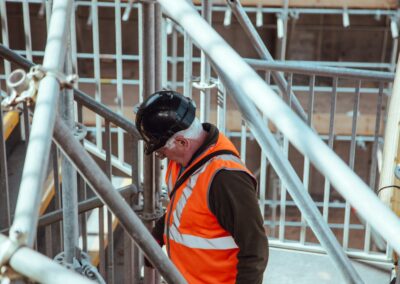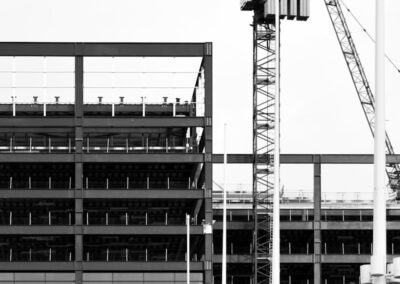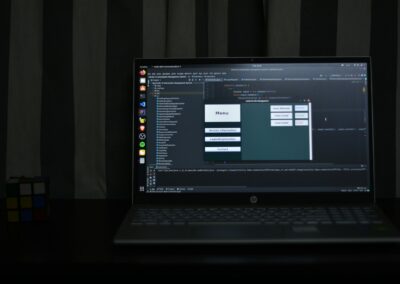Revolutionizing Building Management through Digital Twins
Introduction to Digital Twins in Building Lifecycle Management
Integrating digital twins in building lifecycle management is a groundbreaking approach that enhances every phase of a building’s existence, from design and construction to operation and maintenance. Digital twins, which are virtual replicas of physical assets, provide real-time data and analytics, offering invaluable insights that drive efficiency and optimization. For business executives, mid-level managers, and entrepreneurs in Saudi Arabia, the UAE, and cities like Riyadh and Dubai, embracing this technology can lead to significant advancements in building performance and sustainability.
The concept of digital twins involves creating a dynamic, digital counterpart of a building that mirrors its physical state and performance in real-time. This virtual model is continuously updated with data from sensors and other IoT devices embedded in the building. The integration of digital twins with Building Information Modeling (BIM) systems ensures a seamless flow of information throughout the building’s lifecycle, enabling better decision-making and proactive management.
As urbanization accelerates in the Middle East, particularly in Saudi Arabia and the UAE, the need for smarter, more efficient building management solutions becomes critical. Digital twins offer a holistic approach to managing buildings, ensuring that they remain functional, sustainable, and cost-effective over time.
Enhancing Design and Construction with Digital Twins
The first phase where digital twins in building lifecycle management prove their worth is during design and construction. By integrating digital twins with BIM, architects and engineers can create highly accurate and detailed digital representations of buildings. This integration allows for the simulation of various design scenarios, helping to identify potential issues and optimize designs before construction begins.
In the construction phase, digital twins provide real-time monitoring and management of the building process. Construction managers can track progress, monitor the use of materials, and ensure that construction is proceeding according to plan. Any deviations or issues can be detected early, allowing for timely interventions and adjustments. This proactive approach reduces delays, minimizes costs, and ensures that the building is constructed to the highest standards.
In regions like Riyadh and Dubai, where large-scale construction projects are common, the use of digital twins can significantly enhance project efficiency and quality. By providing a comprehensive, real-time view of the construction process, digital twins help stakeholders ensure that projects are completed on time, within budget, and to the desired specifications.
Optimizing Operation and Maintenance through Digital Twins
Once a building is constructed, digital twins in building lifecycle management continue to provide significant benefits during the operation and maintenance phases. Digital twins offer real-time monitoring of building systems, enabling facility managers to track performance, identify inefficiencies, and predict potential issues before they become critical.
For instance, digital twins can monitor HVAC systems, lighting, and energy consumption, providing data that helps optimize building performance and reduce operational costs. Predictive maintenance, powered by digital twins, ensures that equipment is serviced before failures occur, reducing downtime and extending the lifespan of building systems.
In the Middle East, where energy efficiency and sustainability are top priorities, digital twins support the implementation of green building practices. By continuously monitoring and optimizing building performance, digital twins help reduce energy consumption, lower carbon footprints, and ensure compliance with environmental regulations.
Supporting Proactive Maintenance and Asset Management
The maintenance phase of a building’s lifecycle is where digital twins in building lifecycle management truly shine. Traditional maintenance approaches are often reactive, addressing issues only after they have occurred. Digital twins, however, enable a proactive maintenance strategy, driven by real-time data and predictive analytics.
By continuously monitoring the condition of building assets, digital twins can identify signs of wear and tear early. This allows facility managers to schedule maintenance activities before failures occur, reducing the risk of unexpected breakdowns and costly repairs. Predictive maintenance not only enhances the reliability of building systems but also improves occupant comfort and satisfaction.
In regions like Saudi Arabia and the UAE, where maintaining high standards of building performance is essential, digital twins offer a strategic advantage. By ensuring that buildings operate efficiently and remain in optimal condition, digital twins help protect the value of real estate investments and support long-term sustainability goals.
Facilitating Smart Building Management and Sustainability
The integration of digital twins in building lifecycle management also supports the development of smart buildings. Smart buildings leverage advanced technologies such as IoT, artificial intelligence, and blockchain to enhance building performance and occupant experience. Digital twins play a central role in this ecosystem, providing the real-time data and insights needed to drive smart building initiatives.
For example, digital twins can integrate with smart building systems to automate lighting, heating, and cooling based on occupancy patterns. This not only improves energy efficiency but also enhances occupant comfort and productivity. Additionally, digital twins can support the implementation of renewable energy solutions, such as solar panels and energy storage systems, further reducing the building’s environmental impact.
In the context of smart city initiatives in Dubai and Riyadh, digital twins are essential for achieving the vision of sustainable, connected urban environments. By enabling data-driven decision-making and proactive management, digital twins help create buildings that are not only efficient and sustainable but also resilient and adaptable to future challenges.
Conclusion: The Future of Building Lifecycle Management
The integration of digital twins in building lifecycle management represents a transformative opportunity for the construction and real estate industries. By providing real-time data, predictive analytics, and a comprehensive view of building performance, digital twins enhance every phase of a building’s lifecycle, from design and construction to operation and maintenance.
In rapidly growing urban centers like Riyadh and Dubai, embracing digital twin technology is essential for achieving efficient, sustainable, and high-performing buildings. As the Middle East continues to invest in smart city initiatives and sustainable urban development, digital twins will play a critical role in shaping the future of building management.
For business executives, mid-level managers, and entrepreneurs, the adoption of digital twins offers a strategic advantage. By leveraging this technology, stakeholders can ensure that their building assets remain valuable, efficient, and sustainable for years to come, supporting long-term business success and contributing to the development of smarter, greener cities.
#DigitalTwins #BuildingLifecycleManagement #BIM #Construction #Operation #Maintenance #SmartBuildings #UAE #SaudiArabia #Dubai #Riyadh #ArtificialIntelligence #Blockchain #Metaverse #ExecutiveCoaching #GenerativeAI #ModernTechnology #BusinessSuccess #Leadership #ProjectManagement


